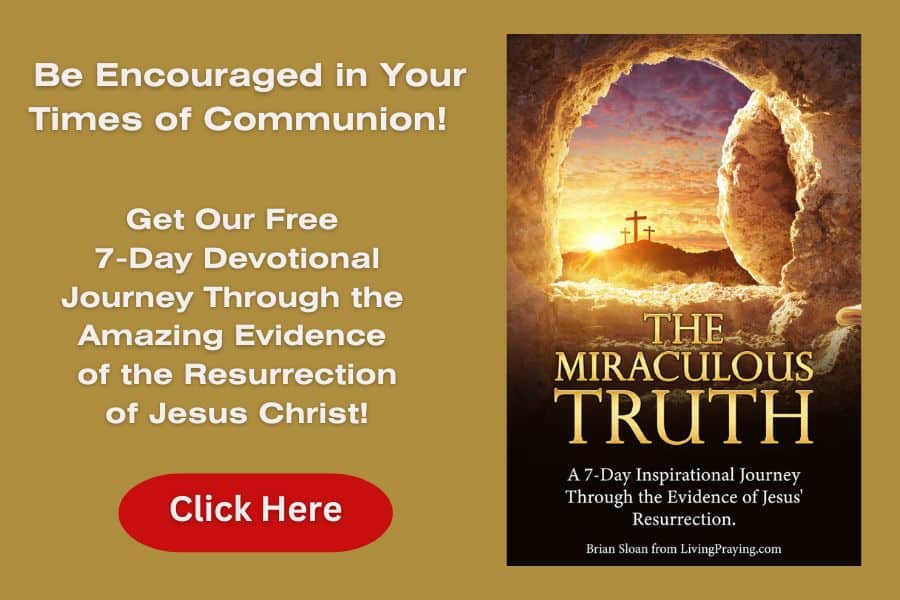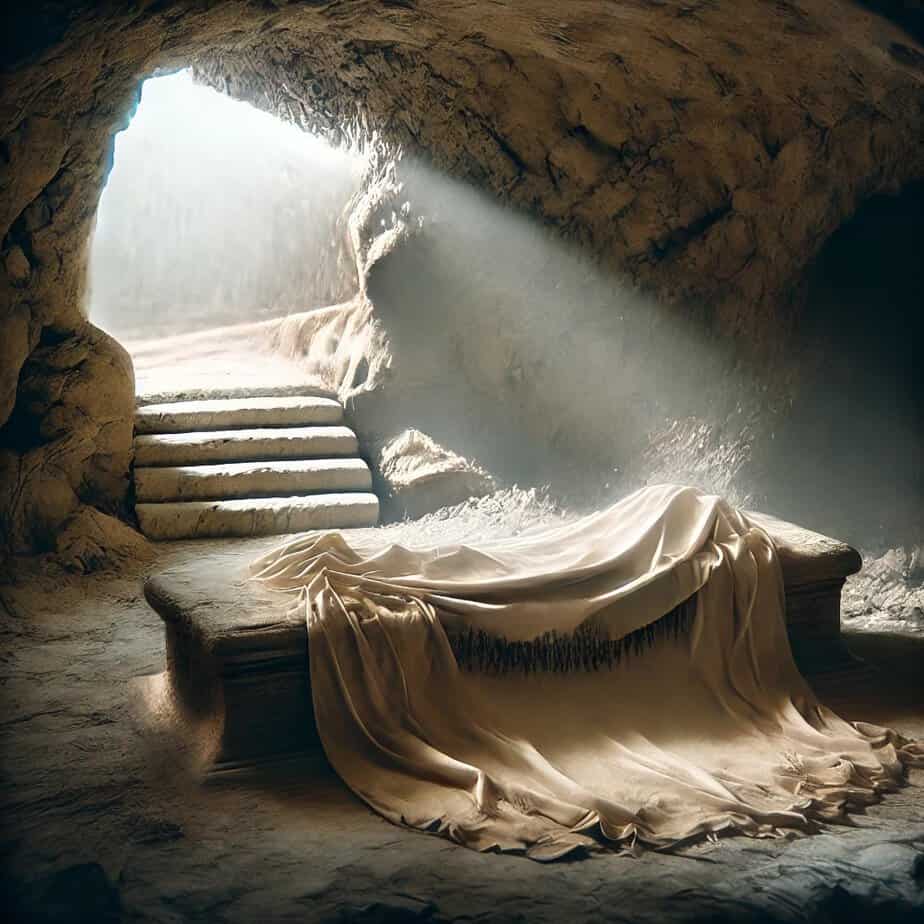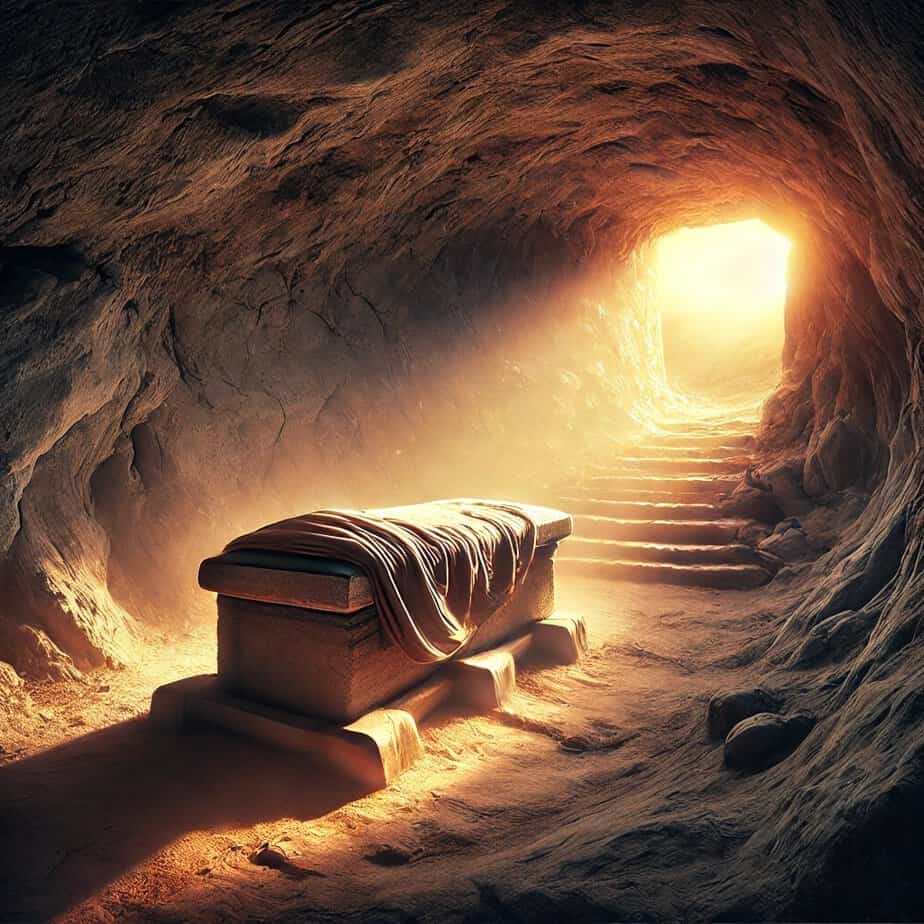Introduction: Why the Resurrection of Jesus Christ Matters
Why Does the Resurrection Matter?
The resurrection of Jesus Christ is the cornerstone of Christianity. Without it, the faith crumbles. The Apostle Paul put it plainly:
“And if Christ has not been raised, our preaching is useless and so is your faith.” (1 Corinthians 15:14, NIV)
That’s a bold statement. It means Christianity is not just about Jesus’ moral teachings or good works—it stands or falls on the resurrection. If Jesus didn’t rise from the dead, then the early Christian movement was built on a lie, and billions of people throughout history have placed their hope in a dead man.
But if the resurrection of Jesus Christ is true, it changes everything. It confirms His divine identity, validates His teachings, and offers the hope of eternal life. That’s why we must ask: Is there historical proof of the resurrection of Christ?
A Historical Fact, Not Just a Theological Claim
Many people assume the resurrection is purely a theological or religious claim—something accepted by faith alone without any supporting evidence. But this couldn’t be further from the truth.
The resurrection is a historical event, meaning it is open to historical investigation just like any other event from the ancient world. It can be analyzed based on historical records, eyewitness testimony, and the best explanation of the available facts. Scholars—including both Christian and non-Christian New Testament scholars—agree on several key historical facts surrounding Jesus’ death and what happened afterward.
This post will explore these facts and demonstrate why the risen Christ is the only explanation that makes sense.
What This Post Will Cover
To make a solid historical case, we will examine three major areas of evidence:
- The Empty Tomb – Why was Jesus’ body never found? If His enemies wanted to stop Christianity, all they had to do was produce His body—but they couldn’t.
- Post-Resurrection Appearances of Jesus – Jesus appeared to different individuals and groups over a period of 40 days. Could all of them have been hallucinating?
- The Explosive Growth of the Early Christian Movement – The followers of Jesus went from terrified fugitives to fearless preachers, willing to die for their testimony. What caused this dramatic change?
Each of these points is supported by historical sources, including New Testament writings, Roman and Jewish historians, and archaeological records.
Can a Miraculous Event Be Investigated Historically?
Some skeptics argue that history cannot confirm miraculous claims like the resurrection. After all, history deals with ordinary events, while miracles, by definition, are extraordinary.
However, historians do not need to assume natural causes to determine whether an event happened. They simply look at the evidence and determine which explanation fits best. The question is not “Can miracles happen?” but rather “What explanation best accounts for the historical evidence?”
As we will see, the historicity of the resurrection is supported by overwhelming eyewitness testimony, historical records, and logical reasoning. The best explanation of the facts is not that the disciples made up a lie, nor that Jesus’ tomb was accidentally lost—it is that Jesus rose from the dead on the third day, just as He said He would.
So, let’s examine the evidence.
The Historical Existence of Jesus of Nazareth
Was Jesus a Real Person?
Before we even discuss the resurrection, we need to establish an important fact: Jesus of Nazareth was a real historical person. Contrary to what some internet skeptics claim, the existence of Jesus is not a matter of debate among serious scholars.
Dr. Bart Ehrman, a leading agnostic scholar who is very critical of the New Testament, even admits:
“The reality is that every single author who mentions Jesus—pagan, Christian, or Jewish—was convinced that he at least lived. Even the enemies of Jesus thought so.”
In other words, the historicity of Jesus is as well-established as any other figure from the ancient world.
But how do we know? What historical records confirm His existence?

Sources Confirming Jesus’ Existence
Multiple sources from the first and second centuries mention Jesus, including Roman historians, Jewish records, and Christian writings. These sources are independent of each other, making them strong historical evidence of Jesus as a real person.
1. Roman Historians on Jesus
- Tacitus (c. AD 56–120) – A Roman senator and historian, Tacitus wrote about Jesus’ death in his Annals (circa AD 116):“Christus, from whom the name [Christian] had its origin, suffered the extreme penalty during the reign of Tiberius, at the hands of one of our procurators, Pontius Pilate.” (Annals 15.44)Here, Tacitus confirms three important details:
- Jesus (Christus) existed.
- He was executed under Pontius Pilate in the reign of Tiberius Caesar (AD 14–37).
- His followers, the early Christians, spread rapidly despite persecution.
- Suetonius (c. AD 69–122) – A Roman historian, Suetonius refers to Christians and possibly Jesus in his work Lives of the Caesars, mentioning disturbances in Rome caused by followers of “Chrestus.”
- Pliny the Younger (c. AD 61–113) – A Roman governor, Pliny wrote a letter to Emperor Trajan about Christians worshiping Jesus as God and refusing to honor Roman gods.
These Roman sources are hostile witnesses—they were not Christians, yet they confirm that Jesus lived, was crucified, and had a growing movement of followers.
2. Jewish Historian Josephus on Jesus
- Josephus (c. AD 37–100) – A Jewish historian who wrote Antiquities of the Jews, Josephus records information about Jesus in two key passages:
- Testimonium Flavianum (Antiquities 18.3.3) mentions Jesus as a wise man and teacher, and acknowledges His crucifixion under Pontius Pilate.
- Another passage (Antiquities 20.9.1) references James, the brother of Jesus, confirming Jesus’ historical existence.
Though some scholars debate Christian interpolations in Josephus’ writings, even secular historians agree that Josephus originally mentioned Jesus.
3. New Testament Writings: More Than Just Religious Texts
Skeptics often dismiss the New Testament writings as “biased.” However, historians do not automatically reject sources just because they have religious significance.
- The New Testament accounts were written by eyewitnesses (or based on eyewitness testimony).
- The Gospels provide independent, corroborating accounts of Jesus’ life.
- Paul’s letters (written within 20–30 years of Jesus’ death) confirm His crucifixion, burial, and resurrection appearances.
Historically speaking, the New Testament is one of the most well-preserved and earliest sets of writings from antiquity. Even non-Christian scholars use it as a source for historical Jesus studies.
Jesus’ Death Under Pontius Pilate: A Well-Documented Fact
One of the most universally accepted facts in ancient history is that Jesus was crucified under Pontius Pilate.
- Roman execution under Tiberius Caesar matches the timeline.
- All historical sources—Christian and non-Christian—agree on His death.
- The crucifixion of Jesus is so well-attested that even critics like Bart Ehrman admit,“One of the most certain facts of history is that Jesus was crucified on the orders of the Roman prefect of Judea, Pontius Pilate.”
Conclusion: A Solid Historical Foundation
With multiple independent sources confirming His existence, there is no reasonable doubt that Jesus of Nazareth was a real person who lived in the first century and was executed under Pontius Pilate.
The question now is: What happened after His death?
This brings us to the next critical piece of the puzzle: the crucifixion of Jesus and its significance.
The Crucifixion of Jesus: A Well-Established Historical Event

Why the Crucifixion is Crucial
Before we can examine the resurrection of Jesus Christ, we must establish a foundational fact: Jesus really died. There is no resurrection without a real death. If Jesus did not actually die on the cross, then the resurrection is meaningless.
Thankfully, the crucifixion of Jesus is one of the most well-documented events in ancient history. It is attested by Christian, Jewish, and Roman sources, making it virtually undisputed among New Testament scholars and historians of antiquity.
As Dr. John Dominic Crossan (a skeptic and co-founder of the Jesus Seminar) admits:
“That he was crucified is as sure as anything historical can ever be.”
Let’s explore the historical records that confirm Jesus’ execution.
Eyewitness Accounts: The Gospels’ Detailed Description
The Gospel accounts provide vivid, firsthand descriptions of Jesus’ suffering, trial, and execution. While skeptics may dismiss them as religious texts, they are also historical sources, written within the lifetimes of eyewitnesses.
Key Details from the Gospels:
- Jesus was flogged (Matthew 27:26; Mark 15:15) – Roman flogging was so brutal that many victims died before even reaching crucifixion.
- He was forced to carry His cross (John 19:17; Matthew 27:32) – This was common practice in Roman executions.
- He was crucified between two criminals (Luke 23:32-33) – The Romans reserved crucifixion for the worst offenders.
- Darkness covered the land for three hours (Matthew 27:45) – An unusual event recorded by multiple sources.
- He was buried in a tomb belonging to Joseph of Arimathea (Matthew 27:57-60) – A well-documented burial according to Jewish custom.
The eyewitness testimony of the male disciples and female followers of Jesus is consistent across the four Gospel accounts, reinforcing its credibility.
Non-Christian Confirmations: Roman and Jewish Sources
1. Roman Historians Acknowledge Jesus’ Crucifixion
- Tacitus (AD 116) confirms that Jesus was executed under Pontius Pilate:“Christus, from whom the name [Christian] had its origin, suffered the extreme penalty during the reign of Tiberius at the hands of one of our procurators, Pontius Pilate.” (Annals 15.44)The phrase “extreme penalty” was a common Roman term for crucifixion.
- Lucian of Samosata (2nd century AD), a Greek satirist, mocked Christians for worshiping a crucified man:“The Christians, you know, worship a man to this day—the distinguished personage who introduced their novel rites, and was crucified on that account.” (The Passing of Peregrinus, 11-13)
Lucian had no reason to validate Christian claims, yet he confirms that Jesus was crucified and His followers worshiped Him as divine.
2. Jewish Historian Josephus Confirms Jesus’ Death
- Josephus (AD 93), a Jewish historian, records that:“Pilate condemned him to be crucified and to die.” (Antiquities 18.3.3)
Though this passage is debated for later Christian edits, most scholars agree that Josephus originally mentioned Jesus’ execution under Pilate.
3. The Jewish Talmud Mentions Jesus’ Execution
- The Babylonian Talmud (Sanhedrin 43a) states:“On the eve of Passover Yeshu [Jesus] was hanged.”In Jewish terminology, “hanged” often referred to crucifixion (see Galatians 3:13).
Even Jesus’ opponents never denied His death—they only tried to explain away the resurrection.
Roman Execution Practices: Death Was Certain
The Roman cross was not just a form of execution—it was torture designed to maximize suffering and guarantee death.
Why Jesus Could Not Have Survived:
- Brutal Flogging – Many victims died from the scourging alone.
- Nail Placement – Crucifixion nails severed nerves and arteries, causing excruciating pain and blood loss.
- Asphyxiation – Crucified victims suffocated as they lost the strength to lift themselves to breathe.
- The Roman Guard’s Confirmation – The Roman soldiers pierced Jesus’ side (John 19:34), ensuring He was dead.
- No Recorded Survivors of Roman Crucifixion – The Romans were experts at execution.
The Swoon Theory (the idea that Jesus fainted and later revived) is impossible in light of Roman military efficiency.
The Burial Account: Jesus Placed in a Known Tomb
After His death, Jesus’ body was taken down and buried in a tomb owned by Joseph of Arimathea (Matthew 27:57-60).
Why the Burial is Historically Credible:
✔ Joseph of Arimathea was a member of the Jewish Sanhedrin—if this were a made-up story, early Christians would not have invented a Jewish leader as the one giving Jesus an honorable burial.
✔ The location of the tomb was known—meaning His body could have been easily found if His followers had lied about the resurrection.
✔ Women discovered the tomb empty—in the first century, female testimony was considered unreliable. If the story were fabricated, it would have cited male disciples as the first witnesses instead.
The burial of Jesus is a critical part of the resurrection story because it establishes that His body was placed in a specific, known location—meaning it could be verified.
Conclusion: Jesus Really Died on the Cross
The crucifixion of Jesus is supported by:
✔ Eyewitness Gospel accounts
✔ Roman and Jewish historical sources
✔ Archaeological evidence of Roman crucifixion practices
✔ The certainty of death in Roman executions
The fact of Jesus’ death is as solid as any event in ancient history. The real question is: What happened next?
If Jesus truly rose from the dead, we should expect compelling evidence of an empty tomb.
Next, we will examine one of the most debated events in history: the Empty Tomb.
The Fact of the Empty Tomb: A Historical Analysis
The empty tomb of Jesus is one of the most hotly debated historical facts surrounding the resurrection of Jesus Christ. However, when we examine the evidence, the empty tomb story emerges as one of the strongest pieces of historical evidence for the resurrection. Even many New Testament scholars, including some who are not Christians, agree that the best explanation for the empty tomb is still up for serious consideration.
In this section, we will explore the historical credibility of the empty tomb, the Gospel accounts, the role of key witnesses, the testimony of Jesus’ enemies, and why alternative explanations fail.
1. The Historical Credibility of the Empty Tomb Story
Some skeptics argue that the empty tomb story was a later invention, but the historical evidence strongly suggests otherwise.
A. The Gospel Accounts Describe the Empty Tomb in Detail
The Gospels (Matthew, Mark, Luke, and John) each independently record that Jesus’ tomb was found empty on the third day after His crucifixion. Though they vary in details (as is common with independent eyewitness testimony), they agree on the central facts:
- Jesus was buried in a known tomb by Joseph of Arimathea (Mark 15:43-46, Matthew 27:57-60).
- The tomb was sealed and guarded (Matthew 27:62-66).
- Women discovered the tomb empty on Sunday morning (Mark 16:1-4, John 20:1).
- The disciples found the grave clothes left behind (Luke 24:12, John 20:5-7).
These details reflect a real historical event, not a fabricated legend. If the Gospel writers had invented the empty tomb story, they would have made it sound more credible to their audience—yet they included details that seem counterproductive to their case (more on that next).
B. Why Would Early Christians Invent Joseph of Arimathea’s Role?
One of the strongest arguments for the historical reliability of the empty tomb is the role of Joseph of Arimathea.
- Joseph was a member of the Jewish Sanhedrin, the very council that condemned Jesus to death (Mark 15:43, Luke 23:50-51).
- If early Christians had invented the empty tomb, they would not have chosen a Sanhedrin member as the one who buried Jesus.
- The early church had no reason to make up Joseph’s role—he was a well-known figure, and his tomb’s location was public knowledge.
This fact suggests that Jesus’ burial and empty tomb were widely known and not a later fabrication.
C. Women as the First Witnesses
Another powerful argument for the authenticity of the empty tomb is that the first eyewitnesses were women—specifically, Mary Magdalene, Joanna, and other female followers of Jesus (Luke 24:1-10, Matthew 28:1-10).
- In first-century Jewish culture, unfortunately a woman’s testimony was not considered legally valid (Josephus, Antiquities 4.8.15). As bad as that sounds to most of us, it was true of the culture.
- If the Gospel writers were making up the empty tomb story, they would have chosen male disciples (like Peter or John) as the first witnesses.
- Communicating that women as the first witnesses actually strengthens the historical credibility of the empty tomb account.
No one inventing a false resurrection story in that culture would have made women the key witnesses unless it were true.
2. The Testimony of Jesus’ Enemies Confirms the Empty Tomb
One of the most compelling arguments for the empty tomb is that even Jesus’ enemies did not deny it!
- The Jewish authorities never claimed that Jesus’ body was still in the tomb.
- Instead, they accused the male disciples of stealing the body (Matthew 28:11-15).
Think about that: The Jewish leaders and Roman authorities had every reason to disprove the resurrection. If Jesus’ body were still in the tomb, they could have simply produced it to silence the early Christian movement. But they didn’t.
Their only response was to claim that the disciples had stolen the body—an argument we will now examine and debunk.
3. Alternative Explanations Fail
Skeptics have tried to explain the empty tomb with various natural theories, but none hold up to scrutiny.
A. The Wrong Tomb Theory?
Some argue that the women went to the wrong tomb and mistakenly thought Jesus had risen.
- This is highly unlikely, as Joseph of Arimathea’s tomb was a known location.
- The Roman guards knew which tomb they were guarding (Matthew 27:62-66).
- If this were true, the authorities could have simply checked the correct tomb and produced the body.
The wrong tomb theory does not explain why both the disciples and Jesus’ enemies acknowledged that the tomb was empty.
B. The Stolen Body Theory?
The earliest anti-Christian explanation (Matthew 28:11-15) was that the disciples stole Jesus’ body while the Roman soldiers were sleeping.
- Roman soldiers faced the death penalty if they failed their duty—sleeping on watch was unheard of.
- The disciples were terrified and in hiding—they would not have had the courage or ability to overpower Roman guards.
- Why would they die as martyrs for a lie? People die for mistaken beliefs, but no one dies for what they know to be false.
The stolen body theory fails because it does not explain the radical transformation of the disciples, who went from being fearful cowards to bold preachers willing to die for their faith.
C. The Swoon Theory?
The swoon theory claims that Jesus did not actually die—He merely fainted on the cross and later revived in the tomb.
This theory is impossible:
- Roman executioners were experts—Jesus was flogged, crucified, and pierced in the side (John 19:34).
- If Jesus had somehow survived, He would have been in critical condition, not appearing triumphant and resurrected.
- This theory does not explain how Jesus got past the sealed tomb and Roman guards in His injured state.
The swoon theory contradicts everything we know about Roman crucifixion as associated with medical science.
Conclusion: The Empty Tomb is a Historical Fact
The fact of the empty tomb is supported by:
✔ The Gospel accounts and independent early sources.
✔ The unlikely role of Joseph of Arimathea as the one who buried Jesus.
✔ Women as the first witnesses, strengthening the credibility of the account.
✔ The silence of Jesus’ enemies—they admitted the tomb was empty.
✔ The failure of alternative explanations, which do not fit the evidence.
The best explanation of the empty tomb is exactly what the Gospels record:
Jesus of Nazareth rose from the dead.
Next, we will examine the post-resurrection appearances of Jesus and why they confirm the reality of the risen Christ.
Post-Resurrection Appearances of Jesus: The Eyewitness Evidence
The empty tomb alone is powerful evidence for the resurrection of Jesus Christ, but what happened next is even more compelling: Jesus was seen alive by multiple individuals and groups over a period of 40 days.
If the resurrection was merely a spiritual belief, we would not expect to see so many detailed eyewitness accounts describing Jesus in physical form—eating, speaking, and interacting with His followers. Yet, that is exactly what we find.
This section will explore the historical evidence of the post-resurrection appearances of Jesus, the Apostle Paul’s testimony, and how these encounters transformed skeptics and doubters into bold witnesses.
1. The Eyewitness Testimony: Jesus Appeared to Many
After His resurrection, Jesus of Nazareth did not merely appear once or twice—He appeared to different people, at different times, in different places.
A. Who Saw the Risen Jesus?
The Gospels and Paul’s letters provide a detailed list of people who saw Jesus after His resurrection:
- Mary Magdalene (John 20:11-18) – Jesus appeared to her first.
- Other women (Matthew 28:9-10) – They took hold of His feet and worshiped Him.
- Two disciples on the road to Emmaus (Luke 24:13-35) – Jesus walked, talked, and ate with them.
- Peter (Cephas) (Luke 24:34, 1 Corinthians 15:5) – A private appearance.
- The Twelve disciples (Luke 24:36-43) – Jesus showed them His wounds and ate with them.
- Over 500 people at once (1 Corinthians 15:6) – A massive public appearance.
- James (Jesus’ brother) (1 Corinthians 15:7) – A former skeptic who became a leader in the early church.
- The disciples at the ascension (Acts 1:9-11) – Jesus was seen ascending into heaven.
- Paul (formerly Saul, a persecutor of Christians) (Acts 9:1-9, 1 Corinthians 15:8) – This encounter radically changed his life.
The sheer number of eyewitness accounts makes it highly improbable that these were hallucinations or legends.
2. The Apostle Paul’s Testimony: 1 Corinthians 15 as an Early Creed
A. Paul’s Letter to the Corinthians (c. AD 55)
One of the earliest historical records of the resurrection comes from Paul’s letters, written just 20–25 years after Jesus’ death.
“For I delivered to you as of first importance what I also received: that Christ died for our sins in accordance with the Scriptures, that he was buried, that he was raised on the third day, and that he appeared to Cephas, then to the twelve. Then he appeared to more than five hundred brothers at one time… Then he appeared to James, then to all the apostles. Last of all, as to one untimely born, he appeared also to me.”
(1 Corinthians 15:3-8, ESV)
B. Why This Passage is Crucial
- This is an early Christian creed, likely formulated within a few years of Jesus’ resurrection (scholars date it to AD 30–36).
- It contains multiple eyewitness testimonies, including skeptics like James and Paul.
- Paul encourages his readers to fact-check his claim: the 500 witnesses were still alive at the time of writing!
If Paul were lying, skeptics could have easily disproven the resurrection by asking the living eyewitnesses. But instead, the movement continued to spread rapidly.
3. Multiple Encounters in Different Places and Times
A. Hallucination Theory? Impossible.
Some skeptics suggest that the post-resurrection appearances of Jesus were hallucinations. However, hallucinations are:
- Personal (one person sees them at a time).
- Rarely involve group settings.
- Never include physical interactions (eating, touching).
Jesus was seen by groups of people, indoors and outdoors, over a period of 40 days. His followers not only saw Him—they talked with Him, ate with Him, and touched His wounds.
B. Different Locations Strengthen the Case
Jesus appeared in:
- A garden (John 20:11-18).
- A locked room in Jerusalem (Luke 24:36-49).
- A road outside the city (Luke 24:13-35).
- The Sea of Galilee (John 21:1-14).
- A mountain (Matthew 28:16-20).
If these were hallucinations or myths, why do they occur in so many different locations with so many different people?
4. The Transformation of Doubting Thomas
One of the most striking eyewitness encounters is that of Thomas, one of the Twelve disciples.
- Thomas did not believe the reports of Jesus’ resurrection (John 20:24-25).
- He demanded physical proof, saying:“Unless I see the nail marks in His hands and put my finger where the nails were, and put my hand into His side, I will not believe.” (John 20:25)
- Jesus appeared to him a week later and said:“Put your finger here; see my hands. Reach out your hand and put it into my side. Stop doubting and believe.” (John 20:27)
- Thomas’ response?“My Lord and my God!” (John 20:28)
This account demonstrates that the resurrected Jesus was not merely a vision—He had a physical body with crucifixion wounds.
5. The Risen Jesus Eats, Speaks, and is Physically Touched
The Gospels stress the physicality of the risen Jesus, ruling out ghostly visions or hallucinations.
- Jesus ate fish with His disciples (Luke 24:41-43).
- He invited Thomas to touch His wounds (John 20:27).
- He broke bread with the disciples (Luke 24:30-31).
If Jesus’ resurrection were only spiritual (as some skeptics suggest), why do the earliest eyewitnesses insist on a physical, bodily resurrection?
Conclusion: The Best Explanation is the Resurrection
The post-resurrection appearances of Jesus are supported by:
✔ Multiple, independent eyewitness testimonies.
✔ A creed from 1 Corinthians 15, dating back to within a few years of Jesus’ death.
✔ Encounters in different places and times.
✔ Skeptics like Thomas and Paul being radically transformed.
✔ Jesus eating, speaking, and being physically touched.
Alternative explanations—hallucinations, visions, or myths—fail to explain the evidence.
The best explanation is exactly what the eyewitnesses claimed:
Jesus of Nazareth physically rose from the dead.
In the next section, we will examine how the resurrection transformed the disciples and led to the rapid expansion of the early Christian movement.
The Transformation of the Disciples and the Birth of the Early Church
One of the strongest pieces of historical evidence for the resurrection of Jesus Christ is the radical transformation of His disciples. Before the resurrection, these men were fearful, confused, and in hiding. Afterward, they became bold preachers, willing to suffer and die for their belief in the risen Christ.
This section will explore:
- How the disciples changed from fearful fugitives to fearless proclaimers.
- Why the persecution of Christians proves they were not lying.
- The rapid spread of the early Christian movement despite intense opposition.
- How Roman historians, like Tacitus, confirm the existence of the Tribe of Christians.
1. The Dramatic Change in the Disciples
A. Before the Resurrection: Fear and Doubt
The male disciples were devastated and terrified after Jesus’ crucifixion. Their leader had been publicly executed, and they feared they would be next.
- Peter denied Jesus three times out of fear (Luke 22:54-62).
- All the disciples fled when Jesus was arrested (Mark 14:50).
- Thomas doubted the resurrection until he saw Jesus in person (John 20:24-29).
At this point, they were not bold evangelists—they were hiding behind locked doors (John 20:19).
B. After the Resurrection: Boldness and Conviction
Something changed dramatically. These same frightened men suddenly began preaching publicly, proclaiming that Jesus had risen from the dead.
- Peter, who had denied Jesus, stood up in Jerusalem and preached to thousands (Acts 2:14-41).
- James, the brother of Jesus, had been skeptical but became a leader of the early church (Acts 15:13; 1 Corinthians 15:7).
- The disciples traveled far and wide, spreading the message of the risen Christ.
Their transformation was so dramatic that even secular historians struggle to explain it.
What changed? They had seen the risen Jesus.
2. The Persecution of Christians: Why Die for a Lie?
If the disciples had fabricated the resurrection, they would have had every reason to recant when faced with torture and death. Yet, they remained steadfast, enduring persecution, imprisonment, and martyrdom.
A. How the Disciples Died for Their Faith
- Peter was crucified upside down in Rome.
- James (son of Zebedee) was beheaded by Herod Agrippa (Acts 12:2).
- Thomas was speared to death in India.
- Paul was beheaded under Emperor Nero.
These men did not gain power, wealth, or comfort—they gained suffering and death. People may die for a lie they believe is true, but no one dies for what they know is a lie.
B. Roman Persecution of Christians
The early Christians were not just mocked—they were hunted down, tortured, and executed.
- Emperor Nero (AD 64) blamed Christians for the Great Fire of Rome and had them burned alive or thrown to wild animals.
- Pliny the Younger (AD 111), a Roman governor, wrote about executing Christians for refusing to renounce their faith.
- Tacitus (AD 116), a Roman historian, wrote that Christians were being killed for their faith in a crucified leader (Jesus).
If the resurrection was a lie, why did so many people willingly die rather than deny it?
3. The Spread of Christianity in the Hostile Roman Empire
Despite violent persecution, Christianity spread at an astonishing rate throughout the Roman Empire.
A. The Early Church Grew Rapidly
By AD 100, Christians had already spread to Rome, Egypt, Greece, and Asia Minor. By AD 300, Christianity had millions of followers.
“The blood of the martyrs is the seed of the church.” – Tertullian
The early church had no political power, no military, and no wealth, yet it grew faster than any other religious movement in history.
B. The “Tribe of Christians” and Roman Records
The Roman historian Tacitus (AD 116) referred to early Christians as a “superstition” that spread rapidly:
“Christus, from whom the name [Christian] had its origin, suffered the extreme penalty during the reign of Tiberius at the hands of one of our procurators, Pontius Pilate, and a most mischievous superstition… broke out not only in Judea, the first place of the mischief, but even in Rome.” (Annals 15.44)
Even the Romans could not ignore the rapid spread of Christianity, which was based on the resurrection of Jesus Christ.
Conclusion: What Caused the Transformation?
The male disciples went from fearful men in hiding to fearless evangelists willing to die.
✔ Fearful to fearless – something radically changed them.
✔ They endured persecution and martyrdom – not for personal gain, but for their conviction that Jesus rose from the dead.
✔ Christianity spread explosively despite Roman efforts to stop it.
✔ Even Roman historians acknowledge the movement’s rapid growth.
The best explanation for this transformation is exactly what the disciples claimed:
Jesus of Nazareth rose from the dead.
In the next section, we will examine the testimony of the Apostle Paul, a former persecutor who became the greatest missionary of all time.
The Testimony of the Apostle Paul: From Persecutor to Preacher
Few figures in history have undergone a more radical transformation than Saul of Tarsus, better known as the Apostle Paul. Once a zealous persecutor of Christians, Paul became the most influential missionary of the early Christian movement—all because he claimed to have encountered the risen Christ.
If anyone was unlikely to believe in Jesus’ resurrection, it was Paul. Yet, he not only believed but suffered greatly for preaching it. His testimony provides some of the strongest historical evidence for the resurrection of Jesus.
1. Paul’s Radical Transformation: From Enemy to Advocate
Before his conversion, Paul was not just a skeptic—he was an active enemy of Christianity.
A. Paul the Persecutor
- Paul was a highly educated Pharisee (Philippians 3:5-6).
- He saw Christians as heretics and sought to destroy the movement.
- He was present at the stoning of Stephen, the first Christian martyr (Acts 7:58).
- He arrested and imprisoned Christians (Acts 8:3).
Paul had every reason to oppose Christianity. He had status, authority, and religious zeal. Yet, something completely changed him.
B. Paul the Preacher
According to Acts 9, Paul had a dramatic encounter with the risen Christ on the road to Damascus.
“As he neared Damascus on his journey, suddenly a light from heaven flashed around him. He fell to the ground and heard a voice say to him, ‘Saul, Saul, why do you persecute me?’” (Acts 9:3-4)
After this event:
✔ Paul stopped persecuting Christians immediately.
✔ He boldly preached that Jesus was the Son of God (Acts 9:20).
✔ He suffered beatings, imprisonment, and exile for proclaiming Christ.
What could cause such a radical change? Paul’s answer:
“He appeared to me also.” (1 Corinthians 15:8)
2. Paul’s Letters: Early Evidence of the Resurrection
A. Paul’s Writings Are Among the Earliest Christian Documents
- Paul’s letters (Epistles) were written between AD 50-65, making them some of the earliest historical records of Christianity.
- He wrote about the resurrection as a real historical event, not a later myth.
B. 1 Corinthians 15: Paul’s Firsthand Claim
In 1 Corinthians 15:3-8, Paul provides a list of resurrection appearances, ending with himself:
“For I delivered to you as of first importance what I also received: that Christ died for our sins… that He was buried, that He was raised on the third day… and that He appeared to Cephas, then to the Twelve. Then He appeared to more than five hundred brothers at one time… Then He appeared to James, then to all the apostles. Last of all, as to one untimely born, He appeared also to me.”
C. Why This is Significant
- This passage is considered an early creed, dating back to within 5 years of Jesus’ death.
- Paul emphasizes that hundreds of eyewitnesses were still alive at the time of writing.
- He is not just repeating a story—he personally claims to have seen the risen Jesus.
3. Paul’s Willingness to Die for His Testimony
A. Paul’s Suffering for the Gospel
Paul went from persecutor to persecuted. He endured:
✔ Floggings and beatings (2 Corinthians 11:23-25).
✔ Imprisonment (Acts 16:22-24).
✔ Shipwrecks, hunger, and constant danger (2 Corinthians 11:26-27).
B. Paul’s Martyrdom
According to early Christian tradition, Paul was beheaded in Rome under Emperor Nero (c. AD 67).
- He had once killed Christians, but he died as one.
- He could have avoided execution by denying the resurrection, yet he chose death over denying Christ.
Conclusion: Paul’s Testimony Strengthens the Case for the Resurrection
The Apostle Paul’s transformation is one of the most compelling pieces of evidence for the resurrection of Jesus.
✔ Paul was an enemy of Christianity—he had no reason to believe in Jesus.
✔ He claimed to see the risen Christ and immediately changed his life.
✔ His letters are some of the earliest historical records, confirming the resurrection.
✔ He willingly suffered and died for his testimony.

The best explanation for Paul’s transformation is exactly what he claimed:
Jesus of Nazareth rose from the dead.
Next, we will examine why the resurrection is the best historical explanation for all of the evidence we have explored.
7. The Shroud of Turin: Physical Evidence of the Resurrection?
The Shroud of Turin is one of the most debated Christian relics in history. Believed by many to be the burial cloth of Jesus, it contains a mysterious, life-sized image of a crucified man. If authentic, the Shroud would provide tangible evidence of Jesus’ crucifixion, burial, and possibly even His resurrection.

This section will explore:
✔ What the Shroud is and why it’s significant.
✔ Scientific studies confirming its unique characteristics.
✔ How modern Christian apologists view the Shroud today.
✔ Why the Shroud may point to the reality of the resurrection.
1. What is the Shroud of Turin?
The Shroud of Turin is a 14-foot linen cloth bearing a detailed, faint image of a man who appears to have been crucified in a manner identical to Jesus of Nazareth. The cloth has been housed in Turin, Italy for centuries and has undergone extensive scientific testing.
Key features of the man in the Shroud:
- Pierced wrists and feet, consistent with Roman crucifixion.
- A crown of thorns, something unique to Jesus’ execution.
- A side wound, matching the Gospel description of Jesus being pierced with a spear (John 19:34).
- Blood stains confirmed to be real human blood (type AB).
- No signs of brush strokes, ruling out it being a medieval painting.
While some skeptics claim the Shroud is a medieval forgery, modern research has challenged this assumption.
2. Scientific Studies and New Evidence
Recent studies have strengthened the case that the Shroud is much older than previously thought and that its image cannot be explained by conventional means.
✔ Bloodstains match crucifixion patterns – Forensic analysis shows that the blood flows are consistent with a body that died from crucifixion.
✔ The image is not painted – No pigments or dyes were found on the cloth. The image appears to have been “burned” into the fibers in a way that modern science cannot replicate.
✔ Carbon Dating Controversy – A 1988 carbon-14 test dated the Shroud to the Middle Ages (1260–1390 AD), but recent research suggests that the sample used was taken from a repaired section of the cloth, not the original linen. New studies indicate the Shroud could be over 2,000 years old.
✔ Burst of Energy Theory – Some researchers, including physicists, suggest that the image on the Shroud was formed by an intense burst of radiation, possibly at the moment of Jesus’ resurrection.
Dr. Paolo Di Lazzaro, an Italian scientist who has studied the Shroud, stated:
“The image was produced by a short and intense burst of energy, which is consistent with a resurrection event.”
3. Christian Apologists and the Shroud’s Growing Credibility
In recent years, leading Christian scholars and apologists have become increasingly convinced of the Shroud’s authenticity.
- Dr. Gary Habermas, one of the world’s foremost resurrection scholars, has said that the evidence for the Shroud is “stronger than ever” and that it could be a powerful piece of physical evidence supporting the resurrection.
- Dr. Jeremiah Johnston has argued that the Shroud should not be dismissed, as it aligns with the biblical description of Jesus’ burial.
- Dr. William Lane Craig, while cautious, acknowledges that the Shroud remains an intriguing artifact worthy of study.
If the Shroud truly wrapped Jesus’ body, it would be one of the most extraordinary pieces of historical evidence confirming His death, burial, and resurrection.
4. Does the Shroud Point to the Resurrection?
While the Shroud cannot prove the resurrection by itself, it does provide compelling physical evidence that aligns with what we already know:
✔ The man in the Shroud suffered the exact wounds Jesus endured.
✔ The bloodstains confirm He was dead before being wrapped.
✔ The image was formed by an unknown process—possibly an event of divine energy.
✔ If the Shroud was Jesus’ burial cloth, it shows that His body vanished from it—consistent with the resurrection.
Even skeptics admit that the Shroud is an unsolved mystery. If it were a simple forgery, science would have explained it by now. Instead, it remains one of the most analyzed and perplexing relics in human history.
Conclusion: A Possible Glimpse of the Risen Christ?
The Shroud of Turin continues to be a source of fascination and debate. While Christians do not need the Shroud to believe in the resurrection, it could serve as a powerful, physical sign pointing to the reality of Christ’s triumph over death.
As Dr. Gary Habermas states:
“If the Shroud is real, then we have an incredible artifact that points to the historical truth of the resurrection.”
At the very least, the Shroud of Turin keeps the conversation alive, forcing even skeptics to wrestle with the possibility that Jesus truly rose from the dead.
8. The Best Explanation: The Resurrection as a Historical Event
Historians analyzing the resurrection of Jesus Christ must ask: What best explains the available evidence?
We have already established key historical facts:
✔ Jesus was crucified and buried.
✔ The tomb was empty on the third day.
✔ Many people, including skeptics, claimed to have seen the risen Jesus.
✔ The disciples were radically transformed and suffered persecution.
✔ Christianity spread rapidly despite severe opposition.
Could these events be explained naturally? Let’s examine alternative theories and why they fail.
1. The Hallucination Theory? Too Many Witnesses
Some skeptics suggest that the disciples only thought they saw Jesus—that they experienced hallucinations due to grief.
Why this fails:
- Hallucinations are individual experiences—Jesus appeared to groups, not just individuals (1 Corinthians 15:6).
- Hallucinations don’t eat food, talk, or allow people to touch them (Luke 24:39-43, John 20:27).
- Paul was not grieving—he was a persecutor. Why would he hallucinate Jesus?
The hallucination theory does not explain the physical nature of Jesus’ appearances or why so many people had the same experience at different times and places.
2. The Legend Theory? Not Enough Time for a Myth to Develop
Some claim that the resurrection is just a legend that developed over time.
Why this fails:
- Paul’s writings (like 1 Corinthians 15) contain creeds dating to within a few years of Jesus’ death—not centuries later.
- Legends develop over generations, yet eyewitnesses were still alive when these accounts were written.
- The empty tomb and resurrection were publicly proclaimed in Jerusalem, the very city where Jesus was crucified. If it were false, critics could have easily disproved it.
The legend theory collapses under the weight of early, widespread, and well-documented belief in the resurrection.
3. The “Spiritual Resurrection” Theory? The Early Church Taught a Bodily Resurrection
Some suggest that the disciples only believed in a “spiritual” resurrection—that Jesus’ soul lived on, but His body remained in the grave.
Why this fails:
- The Gospel accounts insist on a bodily resurrection—Jesus was touched, seen, and He ate food.
- Jewish beliefs in resurrection were physical, not just spiritual (Daniel 12:2).
- The disciples would not preach resurrection in a way that conflicted with their own Jewish background.
The early Christians clearly believed in a physical resurrection, not just a symbolic or spiritual one.
4. The Best Explanation: Jesus Truly Rose from the Dead
When we weigh all the evidence, the resurrection is the only explanation that fits all the facts:
✔ The empty tomb was never refuted, even by Jesus’ enemies.
✔ Eyewitness testimony from multiple sources confirmed His post-resurrection appearances.
✔ The disciples were willing to suffer and die for their belief.
✔ Paul and James (former skeptics) were radically changed.
✔ Christianity exploded throughout the Roman Empire despite intense persecution.
The simplest and most logical explanation is exactly what the eyewitnesses claimed:
Jesus of Nazareth rose from the dead.
Conclusion: What Will You Do With This Evidence?
The resurrection is not just a theological claim—it is a historical event with strong evidence. The real question is:
If Jesus really rose from the dead, what does that mean for you?
Next, we will explore the significance of the risen Christ today and what it means for our faith.
Conclusion: The Significance of the Risen Christ Today
What the Resurrection Means for Us Today
The resurrection of Jesus Christ is not just an event in ancient history—it is the foundation of the Christian faith and the greatest hope for humanity.
If Jesus really rose from the dead, then:
✔ Death is not the end—eternal life is real.
✔ Jesus’ teachings are authoritative—He proved He is who He claimed to be.
✔ God’s power is greater than sin, suffering, and death.
For Christians, the resurrection is not just a past event—it is a present reality that changes how we live today.
“Because I live, you also will live.” (John 14:19)
Jesus’ resurrection means that new life, hope, and restoration are available to all who trust in Him.
Christian Faith is Grounded in History
Unlike myths or vague spiritual philosophies, Christianity stands on a historical event.
- The empty tomb,
- The eyewitness testimonies,
- The transformation of the disciples,
- The explosive growth of the early church,
All of these point to one conclusion: Jesus of Nazareth truly rose from the dead.
This is why Paul boldly proclaimed:
“If Christ has not been raised, your faith is futile; you are still in your sins.” (1 Corinthians 15:17)
Christianity is not blind faith—it is faith rooted in fact.
What Will You Do With This Evidence?
If Jesus really rose from the dead, then everything changes. His resurrection is not just an interesting historical fact—it demands a response.
Here are three options:
- Reject it. You could dismiss the evidence and choose to live as if it never happened.
- Ignore it. You could acknowledge it but avoid thinking about what it means for your life.
- Believe and follow Jesus. You could accept that Jesus is alive, that He is Lord, and that He is calling you to follow Him.
Jesus said:
“I am the resurrection and the life. The one who believes in me will live, even though they die.” (John 11:25)
The resurrection of Christ is an invitation:
✔ To trust in Him for salvation.
✔ To walk in new life with Him.
✔ To have eternal hope beyond this world.
Final Challenge: Will You Accept the Risen Christ?
The historical proof of the resurrection is overwhelming—but faith is more than just knowing facts. It is a personal decision.
So, what will you do with Jesus?
If you’re ready to explore faith in Christ, here’s a simple prayer to begin:
“Lord Jesus, I believe You are the risen Son of God. I turn from my sins and put my trust in You. Fill my life with Your presence, hope, and truth. Amen.”
If you prayed that prayer or have questions about Jesus, don’t keep it to yourself—share with someone or connect with a local church.
The resurrection is not just history—it’s your invitation to new life.
If you want to surrender your life to the risen Lord Jesus, Christ and have questions, you can email us at Brian@LivingPraying.com





Leave a Reply